FODMAPs & Food Processing Series
Article 2: Part 2
The topic of this installment of my FODMAP and Food Processing series is how and why fermentation changes the FODMAP profile of soy foods and cabbage. You can also check out my previous article on fermented milk products and sourdough bread, as well as the first article in this series on the effect dehydration, ripening, and storage conditions have on the FODMAP content in fruit.
Want to learn more about this subject? Read the other articles in this series:
- How Dehydration, Ripening and Storage Affect the FODMAP Content in Fruit
- How Fermentation Affects the FODMAP Content in Sourdough Bread and Dairy Foods

As mentioned in both of my previous pieces, it’s perplexing to discover that the same food can differ in FODMAP concentration depending on the environmental conditions it has been subjected to.
That’s why the scientists at Monash University always test (and retest) all items included in the Monash University Low FODMAP Diet Smartphone App, and why my discussion will be limited to foods found in this essential resource.
Fermentation 101
Fermentation is an ancient form of food processing that utilizes microorganisms such as bacteria, yeast and mold to break down the carbohydrate components in food.
Sauerkraut and certain soy products, as well as yogurt, kefir, cheese and sourdough bread are all examples of fermented foods.
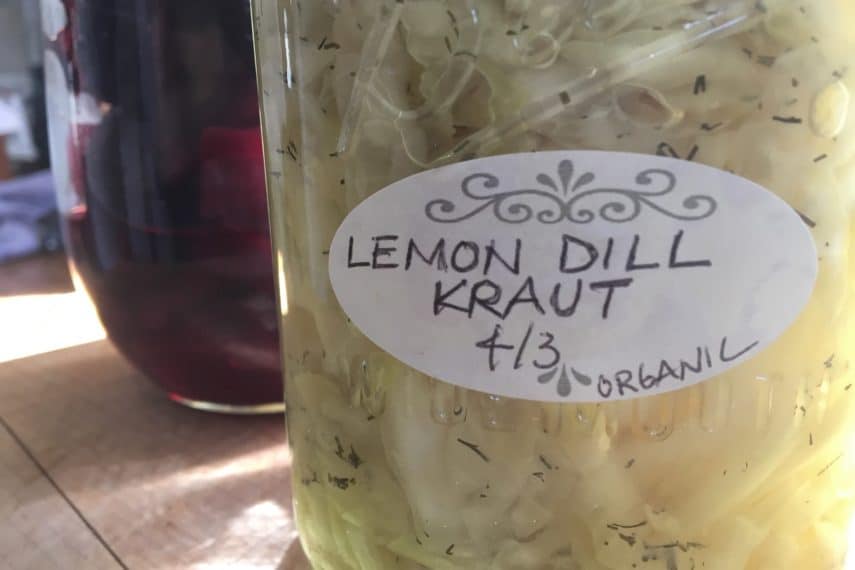
When discussing fermentation, the issue of probiotics and the microbiome almost always comes up. This article will not make reference to either, because they are immaterial to the theme of this series, which is how various food processing techniques alter the FODMAP content in food. FODMAP Everyday® will tackle the complex topic of probiotics at some point, but my colleague, Jody Garlick, has already written an excellent review of the microbiome that I’m sure you’ll enjoy.
Soy’s Got Culture
Decades ago the humble soybean was not nearly as ubiquitous in the U.S. as it is now, but it’s been a staple in other countries for ages due to its low cost and high protein content. When most Americans hear the word “soy,” they probably think of tofu or soy milk, and then struggle to conjure up more products made from this legume.
While these items may be the most well known soy foods, I’ll save them for a future article in this series because their FODMAP transformation has nothing to do with fermentation.
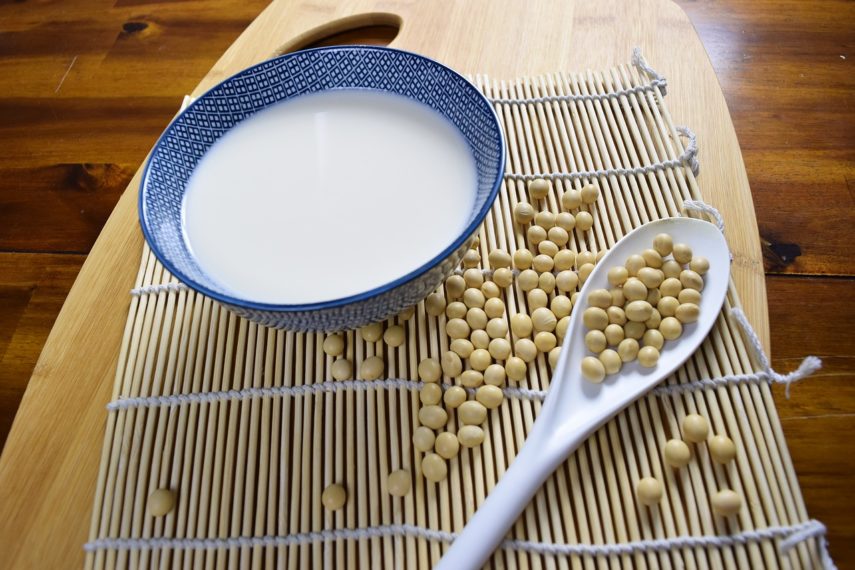
Fermentation Changes Everything
In its natural state, the soybean is a high FODMAP food – ½ cup (85 g) of boiled beans rates a Red Light in the Monash Smartphone App due to excessive galacto-oligosaccharides (GOS) and fructans (both from the “O” FODMAP group).
Tempeh and miso, on the other hand get a Green Light even though they are largely, if not wholly, made from soybeans. I don’t think it will come as a surprise to learn that fermentation is the reason these items get a FODMAP pass.

Miso Is More Than Just Soup
Miso is the salty seasoning that gives the classic Japanese soup its rich flavor. Miso is typically made from soybeans that have been cooked and combined with salt and a type of mold called Aspergillus oryzae, or koji. This mushy mixture is then stashed away for as long as three years, allowing ample time for the fermentation process to yield a tasty low FODMAP product that has a multitude of culinary applications.
Here are a few miso recipes that we’re particularly fond of here at FODMAP Everyday®:
How To Look For Low FODMAP Miso
Only one unbranded miso product is included in the Monash Smartphone App, so my advice is to look for products that have been aged for a long period of time and contain no other high FODMAP ingredients other than soybeans; we like this one from South River Miso Company.
I also suggest that you start with the amount listed in the Monash Smartphone App, which translates to 12 g or 2 American teaspoons.
Tempeh: Meatless Protein
Tempeh is one of my hardest sells as a nutritionist. People tend to be turned off by its funky, moldy appearance, which is actually a by-product of the microorganisms that are essential to its preparation. They also don’t know what to do with this staple of Indonesian cuisine.
That’s too bad, because tempeh is a nutritional powerhouse, providing 19 grams of high-quality protein in a Monash-approved 3.53 ounce (100 gram) serving.
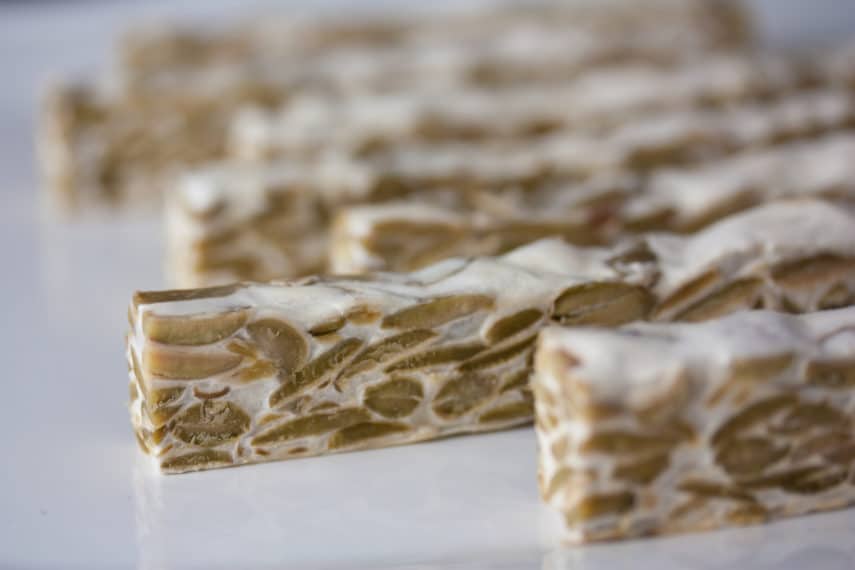
Tempeh is produced by soaking and cooking whole soybeans, inoculating them with a special type of mold, and then letting this mixture ferment for a day or two.
This process lowers the FODMAP content in soybeans significantly, creating a dense product that’s perfect for slicing and adding to a stir-fry or making into high-protein “croutons” by marinating chunks and baking until crispy.
You can find tempeh in the refrigerated section of any health food store, and in many supermarkets as well. So, the next time you’re considering a meatless meal and tofu is just not cutting it for you, give tempeh a try.
Do make sure to buy “plain” tempeh as it can also come with additional ingredients that are high FODMAP.
Cabbage is Confusing
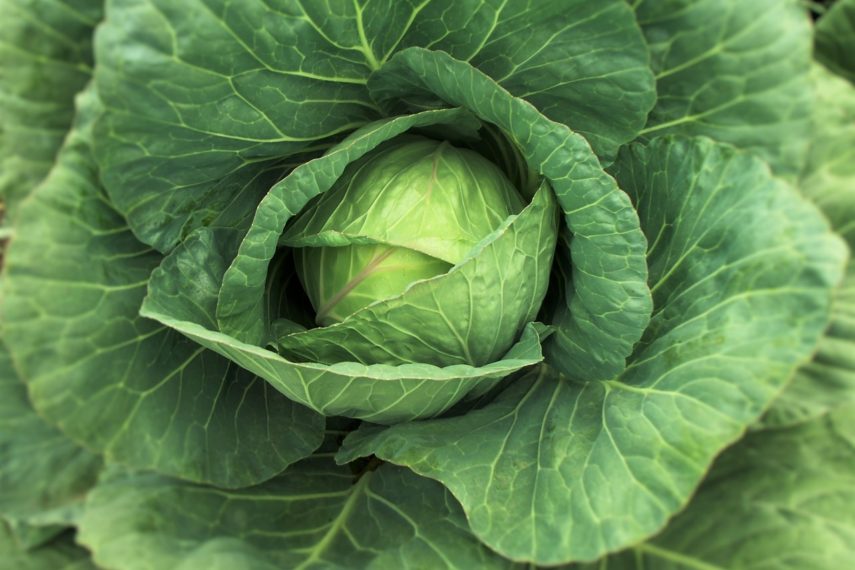
Finally, this exploration of fermentation would not be complete without mentioning cabbage and its processed counterpart, sauerkraut.
Both red and white (common) cabbage are low in FODMAPs when limited to ¾ cup (about 74 g) servings. Larger portions of white cabbage contain excess sorbitol (from the polyol, or “P” FODMAP group) while larger servings of red cabbage contain excess fructans.
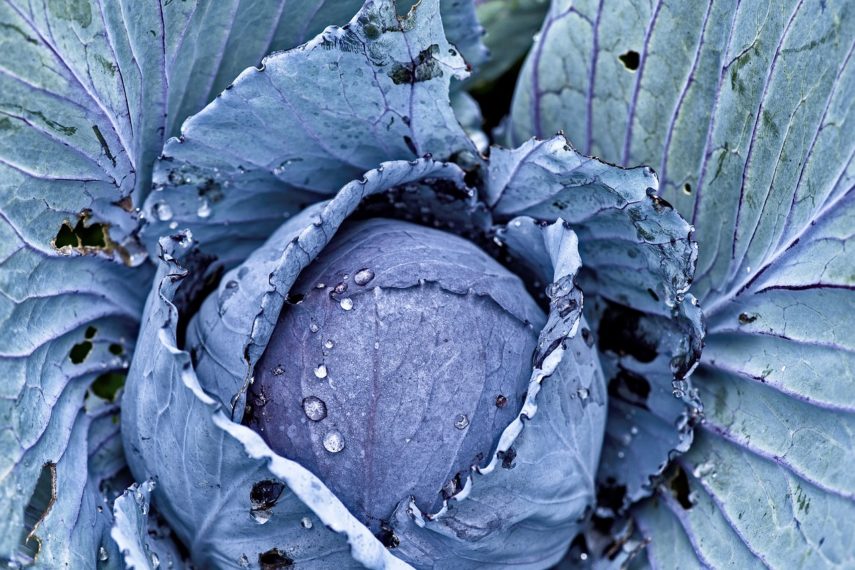
It’s difficult to decipher what, if anything, the fermentation process did to the red cabbage because serving sizes in the Monash app are not consistent for this item. However, white cabbage underwent an interesting transformation when fermented: not only did this process increase its polyol content, it also changed the type of polyol from sorbitol to mannitol!
A little research on my part revealed that mannitol is one of the products formed during sauerkraut fermentation.
Some cultures use sauerkraut quite liberally in their recipes and diets, while others use it more as a condiment in much smaller portions.
The amounts that received a Red or Yellow Light rating in the most recent update of the Monash University FODMAP Diet app may be bad news for avid sauerkraut lovers, but others will be perfectly satisfied with 1 tablespoon of white sauerkraut or a full half-cup of the red stuff — amounts that earned both versions a Green Light rating
Want to learn more about this subject? Read the other articles in this series:
- How Dehydration, Ripening and Storage Affect the FODMAP Content in Fruit
- How Fermentation Affects the FODMAP Content in Sourdough Bread and Dairy Foods
References
- Workman, Dion. Making Miso (https://goo.gl/Li8HSm). February 4, 2012. Retrieved from https://goo.gl/A1j6VU
- Fermented Foods and FODMAPs (https://goo.gl/n6rpJ3). January 25, 2017. Retrieved from https://www.monashfodmap.com
- Hachmeister, K. A., & Fung D. Y. C. (1993). Tempeh: A Mold-Modified Indigenous Fermented Food Made from Soybeans and/or Cereal Grains (https://goo.gl/iZukKY). 19(3), 137-188. Critical Reviews in Microbiology. Retrieved from https://goo.gl/m2eNHB
- Elwell, C. What is Miso? (https://goo.gl/jnc5g7). Retrieved from https://goo.gl/Tw53MR
- Russo, P., Caggianello, G., Arena, M. P., Fiocco, D., Capozzi, V. & Spano. Lactic Acid Bacteria of Fermentation Fruits and Vegetables (https://goo.gl/hvTBMx). Retrieved from https://goo.gl/eN1x3U
- Stiles, H. R., Peterson, W. H., & Fred, E. B. (1925). Fermentation Products Of Certain Mannitol-Forming Bacteria (https://goo.gl/fduMfY). J. Biol. Chem. 64, 643-654. Retrieved from https://www.jbc.org

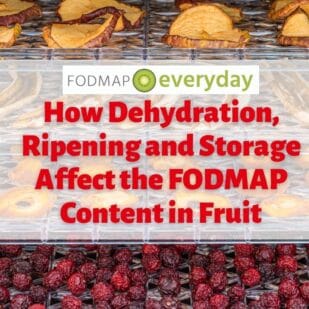






But who eats a WHOLE CUP of sauerkraut??? Can a smaller serving be tested? A heaping tablespoon would be enough to add flavor etc to two tacos for example!! Of course a CUP of cabbage and a CUP of sauerkraut will be vastly different – thats A LOT of sauerkraut vs a normal serving of a vegetable…
Hi! At the moment Monash University and FODMAP Friendly are the only two entities that are testing foods for FODMAPs and publishing results. We agree with you that the tested amounts appear random, at times.
However, it is important to pay attention to some of the finer print on the Monash app. For instance, both the red and white sauerkraut that were tested were German. This is important to provide context. There are many dishes within that cuisine where eating a cup or half a cup would be quite standard alongside sausages, pork chops, etc. Even when making choucroute garnie, which hails from the Alsace region, this would be my approach, so I actually understand the large amounts tested.
Monash has tested smaller portions with the white cabbage version and it is low FODMAP in 1 tablespoon (20 g) portions. If you do not yet have these apps we highly recommend downloading them; you will have updated information at your fingertips.